Pelham Crescent and the early pioneers of photography
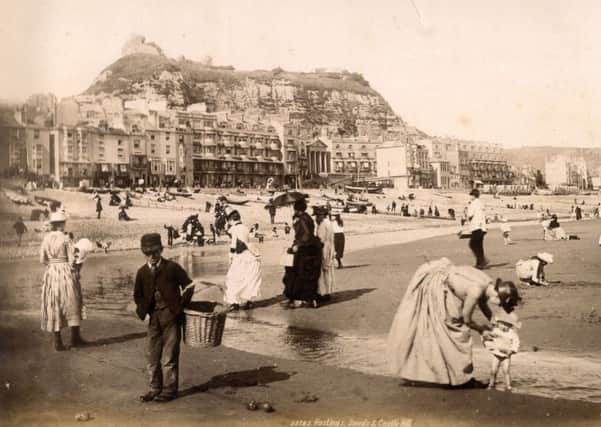

He writes: As the nineteenth Century progressed the demand for souvenir pictures increased. Before the advent of photography engravings, and lithographs fulfilled some of the need but were expensive and time-consuming to produce and from a historian’s point of view were restricted to the original artist’s power of observation and drawing skills, whereas a well-taken photograph could capture all the detail, insignificant and taken for granted at the time but providing so much atmosphere, background and context years later.
Improvements in photography and the ability to reproduce images meant the growing market could be more easily satisfied. Hastings had its own resident talent led by the renowned Fred Judge with an army of other talented local photographers. It wasn’t long before outsiders grabbed some of the action and some, sadly, have their work admired today without us knowing who they were because, in too many cases, photographer and publisher have remained anonymous. As production costs dropped the fashion for postcards leaped dramatically but featured here are the flimsy albumen prints of pre-postcard days.
Advertisement
Hide AdAdvertisement
Hide AdOf the ‘foreign’ photographers the most famous was probably Francis Frith who liked to include people in his images, giving an idea of scale and of course adding information vital to social historians - such as the fashions of the period, conveyances and popular pastimes.
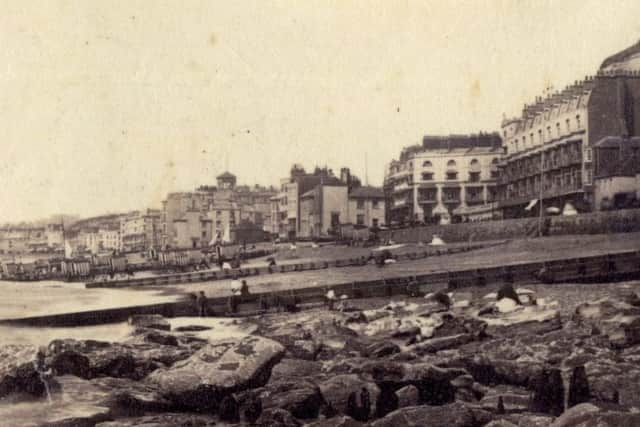

Frith was based in Reigate and employed other photographers to take photographs to his specifications, or he would buy other photographers’ output that they had already taken.
Frith’s early work bore his signature, scratched in reverse on the negative and appearing black in the print as ‘Frith’, followed by the date, in the bottom left corner. Later he stopped identifying his own work and photographs by his associate photographers remained anonymous but his firm’s nineteenth century prints were identified either as Frith & Co , or, embossed and not easy to see, F F & Co, or Frith’s Series.
Where prints were mounted on board, the Frith name appears on the mount immediately under the print or embossed in the lower centre of the mount. We are lucky that Francis Frith was very aware of the importance of preserving his archive of photographic images because, from the beginning he took a lot of trouble to establish sound photographic practice in the processing and storage of the negatives and prints.
Advertisement
Hide AdAdvertisement
Hide AdAt the time of the closure of Frith and Company in 1970 a large stock of prints made nearly a hundred years earlier were still in excellent condition.
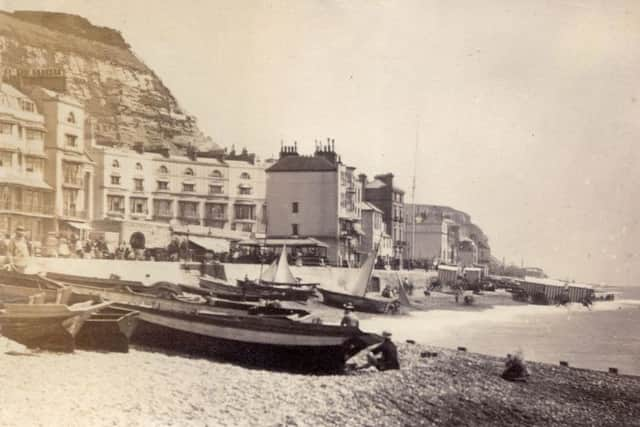

Frith publications were profuse, in addition to the folios of his own photographs published by James Vitue, William MacKenzie, Eyre and Spottiswood and Alfred Bennett, they also included the well known series entitled “Frith’s Photo-Pictures” which are folios or albums of original prints of a specific district such as the Lake District, Dovedale, From the Lands of the Bible, Swiss Views and English Scenery etc.
The company later published two volumes of views and accompanying commentary in 1864 under the titles of “The Gossiping Photographer at Hastings” and “The Gossiping Photographer on the Rhine”, with words and photographs by Francis Frith himself, ranking Hastings up with exotic foreign destinations. Both volumes are now quite rare, with a copy of the Hastings edition being auctioned at Bonhams in June 2012 for £1,000
In addition to the photographic works at Reigate, the Frith Company owned the Cotswold Collotype Works at Wotton-under-Edge, Gloucestershire, where illustrations for books and catalogues were printed and the postcard printing was done. From the early 1890’s the chief concern of Francis Frith & Co was picture postcard production, the introduction of which greatly increased the demand for photographs of scenic views, street scenes and architectural subjects and it’s postcard production for which Francis Frith & Co is most commonly remembered today. After Frith’s death in 1898 the Company continued to use a network of photographers, all of whom were carefully briefed in the taking of the photographs to suit the Company’s requirements. By 1914 there were 52,000 photographs in the archives, an additional 20,000 by 1939 and a further 200,000 in the following three decades.
Advertisement
Hide AdAdvertisement
Hide AdWhen the original Frith company closed in 1971 there were concerns that their unique historical and contemporary archive would be lost. It was John Buck, in 1977, who acquired the archive and formed the present day company which continues to publish photographs in the Frith tradition.
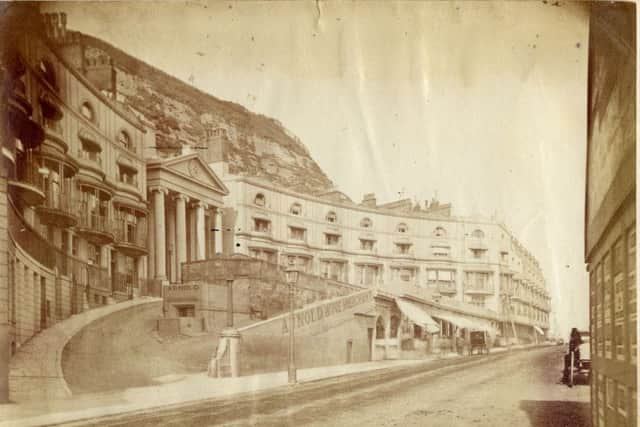

Another name that appears toward the end of the 19th century is ‘Poulton’ or ‘Poulton’s Series’ and are probably associated with the photographer, publisher and printer Samuel E Poulton (1819-1898), who was based in London and south-east England. His son, Alfred Walford Poulton, was also involved in the business, and it’s likely that they published prints taken by local photographers around the country who have remained anonymous. It’s also possible that Edinburgh-based photographer Thomas Polson Lugton was behind the Poulton series. He certainly may have been responsible for some of the scenes taken in Scotland and the name of the series, ‘Poulton’, is made up of several of the letters from ‘Polson’ and ‘Lugton’. T P Lugton was recorded in the 1891 census as being a photographer, born in Ireland, unmarried, and living with his brother’s family of six children at Greenock, Renfrewshire, Scotland. The following year he appears to have moved from the west of Scotland to Edinburgh where he established studios for the next 25 years.
All illustrations throughout this series are from Ion Castro’s own collection and he can make available copies of many of the historic images used in this series. There’s more local history on Ion’s website, www.historichastings.co.uk or contact him - [email protected].
Captions:
2559 Hastings, Poulton’s Series.
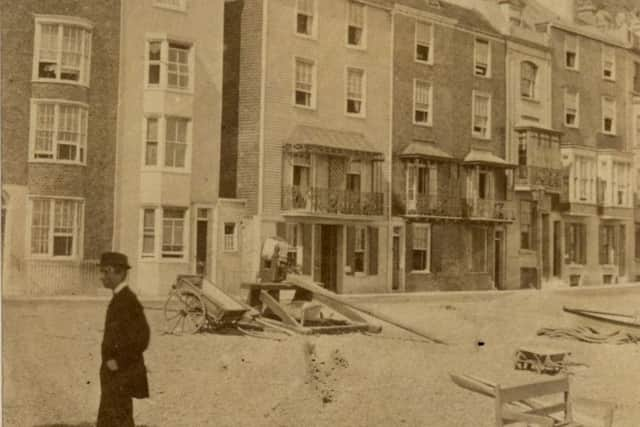

This photograph, no.2559 in Poulton’s Series shows the promenade in front of Pelham Crescent in the 1880’s, Centred on the church of St.Mary in the Castle the view includes, left to right, Denmark place, Caroline Place, the end of Castle street, Beach Terrace eclipsing the eastern end of Pelham Crescent. The Empire Theatre of Varieties,
Advertisement
Hide AdAdvertisement
Hide Adnow the De Luxe Leisure Centre would open in 1899 and onward to the jumble of the fishermen’s beach below the East Cliff. Poulton’s numbering system has never been properly explained.
22782. Hastings; Sands & Castle Hill.
This may be No 227181 in Poulton’s series but the publisher remains unnamed. We are given a good illustration of a late Victorian beach with overdressed folk enjoying the change. A row of bathing machines is drawn up on the right and small boats litter the beach. The Royal Marine Hotel and two adjoining houses to the west, on the eastern end of Marine Parade would be demolished in 1899 to make way for the Empire Theartre of Varieties, later the Hippodeome the De Luxe Leisure Centre
227181 Hastings Sands.
Clearly a photograph by an (unnamed) out-of-town photographer because there are no sands! The eastern end of Beach Terrace can be seen with “The Russian Gun” - a Russian cannon captured in the Crimean War was mounted in 1857 on the seafront opposite
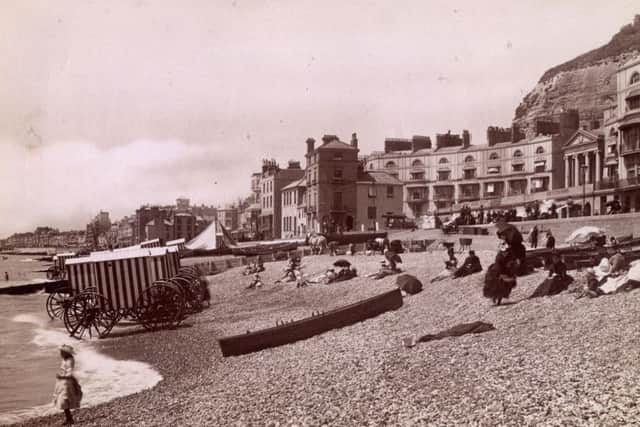

Pelham Arcade, it was moved to the grounds of Hastings Museum when Beach Terrace was demolished by Sidney Little in the 1930’s for seafront improvement and taken for scrap during the second war. Hastings Pier, opened in 1872 can be seen in the distance and notice the horse in the centre of the picture, his job would have been to move the bathing machines.
Arnold.
Advertisement
Hide AdAdvertisement
Hide AdIn the 1870’s the wine cellars beneath the western end of Pelham Crescent were occupied by Joseph Arnold, wine, spirit & beer merchants but a decade later they were trading as Ellis, Wilson & Vidler, then Ellis, son & Vidler whose name can still be made out beneath the paintwork. The rear wall of Beach Terrace provides a good site for fly-posting. Pelham Crescent is little changed nearly 150 years later. The thinness of the print is shown by the distortion where the image has been posted into an album.
Beach Terrace Looking East.
The proximity of the sea wall to Beach Terrace can be seen and Arnold Wine Merchant is now Ellis Son & Vidler. Notice the candy-striped bathing machines on the narrow strip above the tide-line.
Boats.
From the costume of the man in the Top Hat with the telescope this image by an anonymous photographer must date from the third quarter of the nineteenth century and the semi-industrial on the right will soon disappear.
Caroline Parade.
A late photograph, OXO was introduced in 1910 and this must have been part of the original publicity campaign. “Meet you at the OXO” was a popular rendezvous a century ago. Notice the huge shingle-drift across the pavement. Removing shingle from the beach was illegal but clearing shingle cast upon the promenade was a different matter and not all of it ended up back on the beach. “The People” newspaper dates from 1881.
Denmark Place.
Advertisement
Hide AdAdvertisement
Hide AdDenmark Place at the beginning of the twentieth century, now long gone but its position can be worked out from Hastings Castle. Notice the capstan on the beach for pulling up boats.
From the Beach.
Looking West before the regency block on the right, the Royal Marine Hotel was demolished in 1899 to make way for The Empire Theatre of Varieties - renamed as the Hippodrome, then the Cinema de Luxe and now the De Luxe Leisure Centre. In 1870 The Prince Imperial, Napoleon III the defeated Emperor of the French, fled from France, arrived at the Marine Hotel where he was welcomed by the mayor and was later joined by his mother, The Empress Eugenie. Once again the closeness of the sea to the promenade and houses vcan clearly be seen.
Umbrellas on the Beach.
A view from the 1870’s. Notice the umbrellas, usually uses as protection from the rain but her being uses as protection from the sun. O the right is the end of Beach Terrace, long before the OXO ad appeared and the ‘industrial’ buildings are still there. Caroline place is on the left with the fine regency terrace, latterly the Rougemont Hotel before being finally replaced with what is now the Borough Council’s offices.